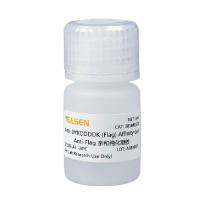Agarose and Polyacrylamide Gel Electrophoresis
互联网
互联网
相关产品推荐

gel4/gel4蛋白Recombinant Neosartorya fumigata 1,3-beta-glucanosyltransferase gel4 (gel4)重组蛋白Glucan elongating glucanosyltransferase 4蛋白
¥2328

重组蛋白|Protein A Agarose Beads / Resin
¥600

GEL/GEL蛋白Recombinant Suregada multiflora Ribosome-inactivating protein gelonin (GEL)重组蛋白rRNA N-glycosidase;allergen Gel m RIP蛋白
¥2616

Anti-Flag亲和纯化凝胶(Anti-DYKDDDDK (Flag) Affinity Gel)
¥506

白蛋白 来源于猪血清,lyophilized powder, essentially globulin free,≥99% (agarose gel electrophoresis),阿拉丁
¥2429.90
相关问答

